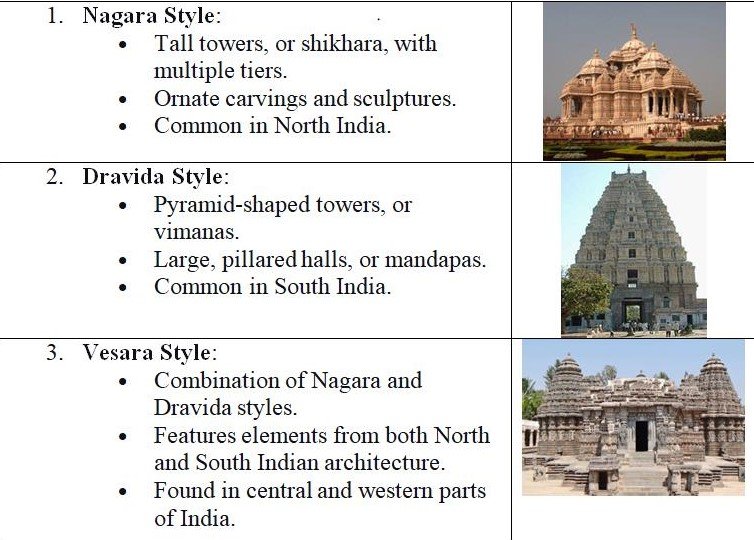Temple Trails: Mapping India's Sacred Sites Across States and Dynasties.
Hey there, friends!
I am reaching out to share something I am passionate about: temples and the incredible dynasties behind them. You might be wondering why I am so fascinated by this topic.
Well, for starters, Indian temple architecture blows my mind. The level of detail and intricacy involved is just awe-inspiring.
But it is not just the architecture that grabs my attention. I am also curious about why the ancient people chose certain deities for specific temples. It is incredible to think about the dedication and resources that went into building these magnificent structures.
According to data from the Statistical Research Department in 2022, there are a whopping 649 thousand Hindu temples across India, grouped by state.
By exploring temples state by state, we can better understand the dynasties that ruled them during different eras.
Now, let me clarify: I am no historian. I am deeply connected to my roots and eager to share in a concise manner what I have learned with others who share my interest but might be short on time to explore on their own. Feel free to correct any facts shared or add anything you already know about the temple or the dynasty.
Thanks for taking the time to read this! Let us embark on this temple journey together.
Cheers!
Reference link- https://www.statista.com/statistics/1371120/india-density-of-hindu-temples-by-state/
Chapter 1: Temples- Meaning and their importance.
Before we delve into exploring Hindu temples constructed by different dynasties, it's important to grasp the concept of temples and their broader significance.
- What is a Hindu temple?
A Hindu temple is called Devalaya in Sanskrit, it translates to residence of the divine or abode of God. Think of it as a special place where you can talk to God, thank God for all the good things in your life or ask for help.Just as we decorate our homes with beautiful objects, the temples are beautifully decorated with bright colours, flowers, bells and statues. All this makes the place joyful and magical. I like to think of it as a portal to take us from ourlittle world to a world of wonderful magic where we can feel the presence of something greater and experience the divine.
2. Why did the sages introduce the concept of temple?
In Hinduism, a fundamental belief is that God is omnipresent, meaning present everywhere, and individuals can offer prayers to deities from any location. However, some individuals may find it challenging to maintain focus and concentration during prayer or meditation. One way the sages addressed this problem was by introducing the concept of temples towards the end of the Vedic age. The temples are built according to ancient scientific principles and architectural guidelines mentioned in Vastu Shastra, Shilpa Shastra, Brihat Samhitas and several other sources.
3. What is the ideal location for a Hindu temple?
Temples are built in spots with lots of positive energy. The main idol of God is placed in the center, called "Garbhagriha" or "Moolasthanam." This spot has strong positive vibes.
Reference Link: https://www.academia.edu/86125724/Earth_s_magnetic_fields_and_Hindu_Mandir_Temple_Construction_and_Location
4. What are the basic elements of a Hindu temple?
 Reference Link-https://www.academia.edu/43738699/Temple_Architecture_and_Sculpture_part_I_vimana_or_Shikara
Reference Link-https://www.academia.edu/43738699/Temple_Architecture_and_Sculpture_part_I_vimana_or_Shikara
5. What are the styles of Hindu temple architecture?
Reference Link:https://www.academia.edu/43738699/Temple_Architecture_and_Sculpture_part_I_vimana_or_Shikara
6. What are the benefits of frequently visiting a Hindu temple?
- Temple Visit Brings Tranquility: Temples act as spiritual cleansers, removing negative energy from our aura and charging us with positive vibes, resulting in a sense of peace and well-being.
- Scientific Planning of Temples: Temples are constructed according to Vastu principles, ensuring a peaceful atmosphere where the main idol's placement and the temple's design enhance positive energy flow and create a serene environment.
- Purity and Healing: Temples are believed to purify the environment, with bells inside killing bacteria, and the act of sitting in front of the idol fostering a spiritual connection and instilling confidence and belief in devotees.
- Physical Benefits of Temple Customs: Rituals like folding hands and walking barefoot not only show respect but also have physical benefits such as relaxation and acupressure, contributing to overall well-being.
- Yogic Tradition: Yogis traditionally prioritized temple visits to absorb positive energy, believing it would lead to success in their endeavours throughout the day.
Exploring Hindu temples reveals cultural depth and spiritual significance. As we learn about their construction, styles, and benefits, and dynasties that built them, may our reverence for these sanctuaries deepen, enriching our spiritual journey.
